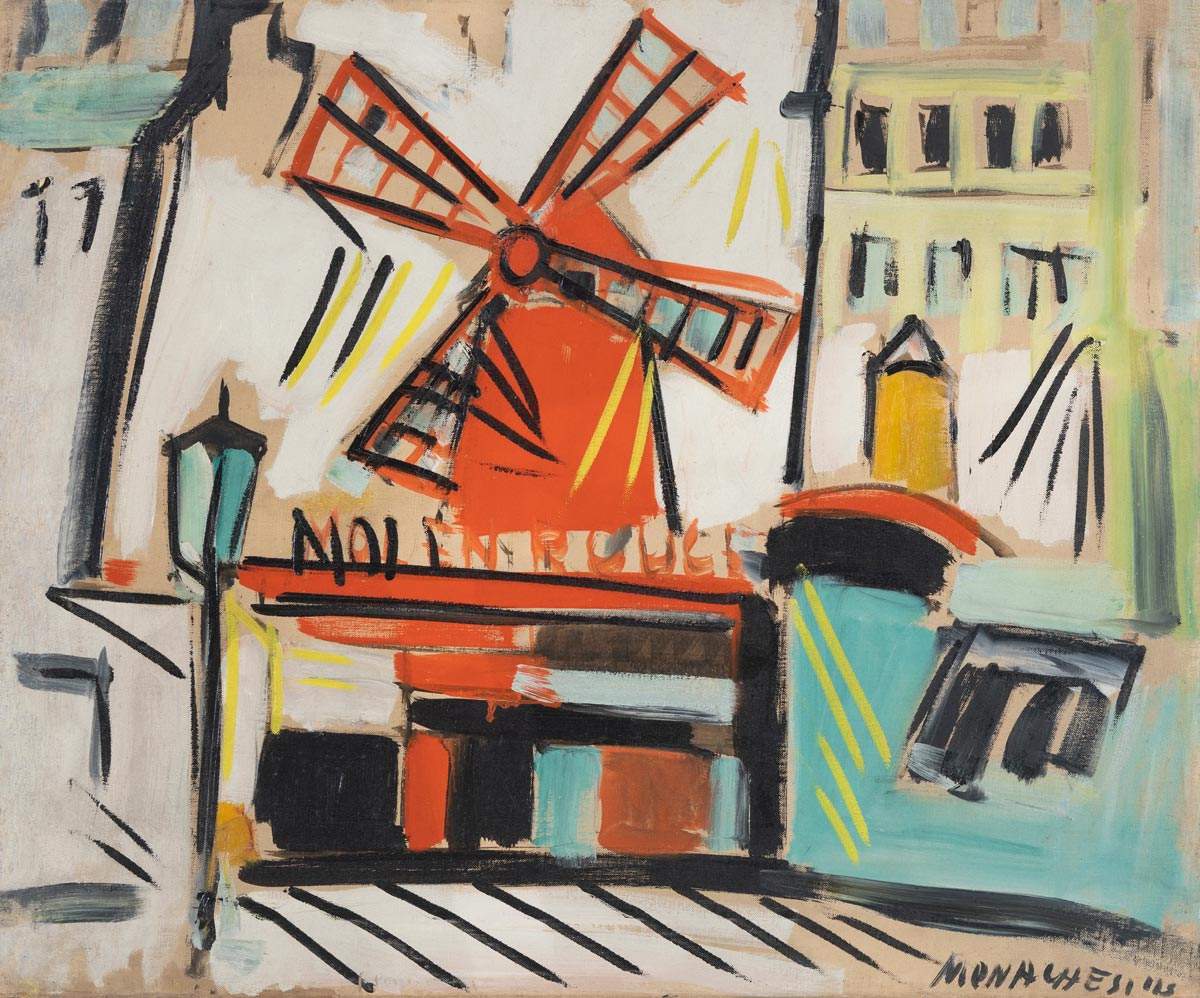Sante Monachesi and his connection with Paris. An exhibition in Macerata
From June 29 to September 24, 2023, the Civic Museums of Palazzo Buonaccorsi in Macerata are dedicating an exhibition to one of the protagonists of the early 20th century, Sante Monachesi (Macerata, 1910 - Rome 1991) and in particular to his relationship with Paris. The exhibition, entitled Sante Monachesi between Macerata and Paris recounts the famous Macerata artist’s connection with the French capital, is curated by Maurizio Faraoni and has the scientific support of Donatella Monachesi. Promoted by the City of Macerata’s Department of Culture with Macerata Musei, the exhibition has the patronage of the Marche Region, the Province and the Macerata Academy of Fine Arts.
Through a selection of more than 60 works including drawings and paintings, the exhibition traces the years in which the artist left his city to Paris by presenting a series of archival documents, photos, letters, sculptures, unpublished drawings, and paintings, some of which were exhibited in the Silvagni Gallery in 1950 and depict the famous “Blind Walls,” pictorial works in which Monachesi transforms and reinterprets the blind profiles of Parisian facades, a clear example of the author’s “minimalism,” as Faraoni illustrates.
“The theme linked to Paris,” the curator writes, “remains a constant in Monachesi’s artistic production, and in this exhibition my task today is to look with a contemporary eye at the work of an artist who has traversed different eras in a cross-cultural way.”
“With this exhibition,” say Sandro Parcaroli, the Mayor of Macerata, and Katiuscia Cassetta, Councillor for Culture of the Municipality of Macerata, “an important three-year exhibition cycle dedicated to Second Futurism closes, which has already seen the work of Tullio Crali and Wladimiro Tulli celebrated. The occasion is even more relevant because of the donation, made to the museum institution by his daughter Donatella, of a considerable nucleus of works to augment the permanent collection, a tribute that goes to enrich and complete the museum’s collection, which already features numerous works by the artists of the Boccioni Group.”
The eight donated works will occupy a section of the exhibition, in close dialogue with the permanent collection of the Novecento. The artist’s activity will thus be documented from the Futurist beginnings to Neo Cubism to arrive at the Agrà movement, short for agravitazionale, which he founded under the banner of free expressive energy, adopting new forms and light materials such as evelpiuma and perspex.
To deepen the knowledge of the multifaceted and brilliant artist Sante Monachesi, more of his works can be admired at the same time in Civitanova Alta at the Pinacoteca Civica Moretti and in Macerata at the Museo del Novecento in Palazzo Ricci starting mid-July.
The catalog (Sagep Editori) accompanying the exhibition includes, in addition to greetings from the authorities, texts by the curator, those of scholars Lorenzo Cantatore, Paola Ballesi and Giulia Mastropietro, who will interview Donatella Monachesi.
Notes on the artist
Sante Monachesi was born in Macerata in 1910, where he attended the School of Professional Art. In 1936 he attended the set design course at the Centro Sperimentale di Cinematografia in Rome. Boccioni’s volume Pittura e scultura futuriste (Futurist Painting and Sculpture) inspired his artistic production in the 1930s; with “spiral” and “diagonal” structures in painting and sculpture, his highly personal Futurist plastic extra was born.
In 1932 he founded with Bruno Tano and others the Futurist Group Umberto Boccioni. Futurist Movement of the Marches. This was the beginning of an intense exhibition rhythm that saw Monachesi participate in the major events of the third decade: in 1937 he participated in the Universal Exhibition in Paris; in 1938 he exhibited at the XXI Venice Biennial and at the Exhibition of the Art Department of Columbia University in New York. In 1939 he exhibited at the III Quadriennale in Rome, with a presentation by Filippo Tommaso Marinetti. After the Futurist experience he projected his research into the elaboration of a figurative poetics through wide chromatic planes and synthetic outlines that characterized his painting of the 1940s and 1950s. Monachesi’s best-known pictorial themes, also inspired by his postwar stay in Paris; such as Blind Walls, Paris, Flowers and Clownesses, are from this period. Monachesi, always interested in research, open to new aesthetic adventures, and inspired by new plastic materials, created the foam rubber and polymethylmethacrylate works in the 1960s. In tune with these new discoveries about matter and energy, through, also, the conquest of space and the disruption of gravitationality, he founded in 1964 the movement “Agravitational Movement” and drafted the first manifesto “Agrà.”
A movement in which utopia becomes credible aesthetic expression and is realized in the levity of forms with the works “Evelpiuma.” This experience is documented by the exhibition “Binding and Dissolving,” Monachesi’s Evelpiuma and the Agrà Universe 1979, Paris, Sorbonne Chapel. In his later years, always active and full of curiosity for the future, he continues his research as a sculptor and painter in defining new horizons for art. His long artistic career is evidenced by important and in-depth critical contributions on his work and numerous exhibitions in Italy and abroad. He died in Rome in 1991.
Image: Sante Monachesi, Moulin Rouge (1955; oil on canvas, 50 x 60 cm; Private collection)
 |
| Sante Monachesi and his connection with Paris. An exhibition in Macerata |
Warning: the translation into English of the original Italian article was created using automatic tools. We undertake to review all articles, but we do not guarantee the total absence of inaccuracies in the translation due to the program. You can find the original by clicking on the ITA button. If you find any mistake,please contact us.





























